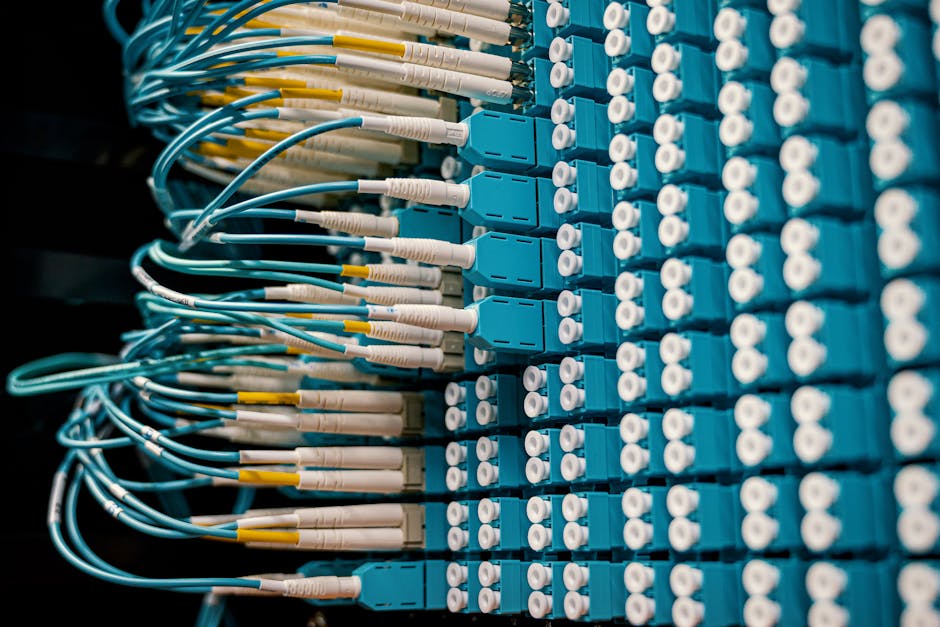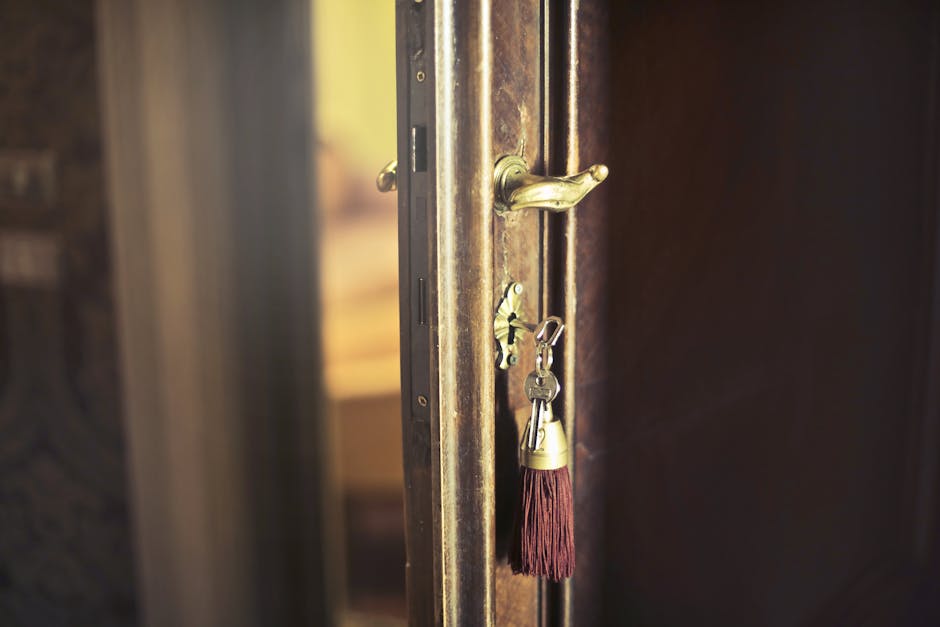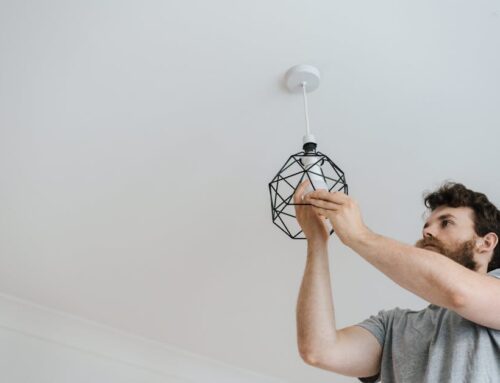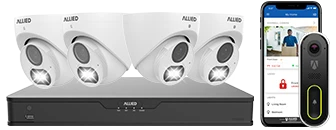Understanding Home Security Monitoring
Home security monitoring is an essential aspect of modern residential security systems, providing real-time surveillance and alerts to safeguard homes. It leverages advanced technologies to keep properties under constant observation, ensuring prompt responses to potential threats.
At its core, home security monitoring refers to a service that involves a network of security devices, such as cameras, sensors, and alarms, which transmit data to a central monitoring station. The central station, staffed by security professionals, is responsible for assessing the situation when an alert is triggered, and taking appropriate actions, which may include notifying homeowners, deploying emergency services, or dispatching security personnel.
An integral part of home security monitoring is the monitoring center. These centers operate 24/7 and are equipped with advanced communication systems to ensure a swift response to any security breaches. The effectiveness of a monitoring service largely depends on the speed and accuracy with which these centers can detect and respond to threats.
Types of Monitoring Systems
There are several types of home security monitoring systems, each catering to different needs and preferences:
- Landline Monitoring: Uses a home’s phone line to transmit alerts. While it is reliable, it can be vulnerable if phone lines are cut.
- Cellular Monitoring: Utilizes mobile networks to send alerts, offering higher reliability since it is not dependent on physical lines.
- Broadband Monitoring: Relies on internet connections for communication. It is faster than landline and cellular options but may be less reliable if there are internet outages.
The ongoing evolution of home security monitoring technologies ensures that these systems continuously improve in terms of reliability, speed, and comprehensiveness. Integrating with other smart home devices, these systems offer enhanced features like remote access and real-time notifications through mobile applications.
Importance of Professional Monitoring
Professional monitoring services are crucial for ensuring an immediate response to emergencies. When an alarm is triggered, professional monitoring centers can quickly determine the nature of the threat and contact the appropriate emergency services if necessary. This rapid response can significantly mitigate potential damage from incidents like break-ins, fires, or medical emergencies.
In summary, understanding home security monitoring involves recognizing its components, knowing how different types of monitoring systems work, and appreciating the importance of professional monitoring services. The right security system can provide peace of mind by effectively protecting your home and family from various threats.
Components of a Home Security System
Home security systems comprise various components designed to work together to ensure the safety of residents. Understanding these components can help you better appreciate how comprehensive a home security system can be in safeguarding your family.
The primary components of a home security system include:
- Control Panel: The control panel is the central hub of a home security system. It communicates with all the installed sensors and devices. The control panel often features a keypad or touchscreen for arming or disarming the system and receiving alerts.
- Security Cameras: These devices can be installed both inside and outside the house to monitor activities. Security cameras can provide real-time video feeds and recordings, helping in identifying intruders and maintaining a visual record.
- Motion Sensors: Motion sensors detect any movement within their designated areas. They are typically used to protect large spaces and are an essential component for detecting unauthorized entry.
- Door and Window Sensors: These sensors alert the system when doors or windows are opened. They are critical in preventing unauthorized access through these common entry points.
- Alarm Sirens: When a security breach is detected, alarm sirens emit a loud noise to alert the household and deter intruders. They can be placed inside and outside the home for maximum effect.
- Glass Break Detectors: These sensors specifically monitor the sound frequency of breaking glass and can promptly alert the system if a window or glass door is broken.
- Smoke and Carbon Monoxide Detectors: Besides intrusion detection, many home security systems include smoke and carbon monoxide detectors to protect against fire and poisonous gas threats.
- Smart Locks: These locks can be controlled remotely, allowing homeowners to lock or unlock doors via a smartphone app, increasing convenience and security.
- Environmental Sensors: Additional sensors can detect water leaks, temperature changes, and other environmental factors that may pose risks to the home.
The following table summarizes the function of the main components:
| Component | Function |
|---|---|
| Control Panel | Central hub, communicates with sensors/devices |
| Security Cameras | Monitor and record activities inside and outside |
| Motion Sensors | Detect movement, protect large spaces |
| Door and Window Sensors | Alert upon opening doors/windows |
| Alarm Sirens | Emit noise to alert and deter intruders |
| Glass Break Detectors | Detect sound of breaking glass |
| Smoke and CO Detectors | Detect fire and carbon monoxide threats |
| Smart Locks | Remote locking/unlocking of doors |
| Environmental Sensors | Monitor leaks and temperature changes |
Each component plays a crucial role in creating a robust and effective home security system. Proper integration and maintenance of these components can significantly enhance the safety and security of your home.
Types of Home Security Monitoring
Home security monitoring comes in various forms, each offering distinct advantages. These types include professionally monitored systems, self-monitored systems, and those that combine both elements.
Professionally monitored security systems involve a contract with a monitoring company. When an alarm is triggered, the system sends a signal to a monitoring center, where trained personnel assess the situation and contact emergency services if needed. Statistics from the National Council for Home Safety and Security reveal that professionally monitored systems can reduce the likelihood of burglary by as much as 60%.
Self-monitored systems, on the other hand, notify the homeowner directly using alerts sent to a smartphone app or other personal device. This type of monitoring relies on the individual to act upon the notification, whether it involves contacting authorities or taking other action. According to a report by Statista, about 18% of U.S. households used self-monitored systems in 2020, reflecting a growing interest in this cost-effective option.
Combining professional and self-monitoring, hybrid systems offer both the reassurance of professional surveillance and the immediate awareness provided by direct alerts. Homeowners benefit from continuous monitoring and can still make real-time decisions via their mobile devices. A study by Parks Associates highlighted that 22% of households with smart home devices prefer a hybrid approach to leverage the strengths of both monitoring types.
Each of these monitoring types can include various features such as video surveillance, motion detectors, glass break sensors, and smart home integration. These components work together to provide comprehensive security coverage.
Choosing the appropriate type of home security monitoring depends on several factors including budget, desired level of control, and the specific needs of the household. It’s essential to assess all available information and real-world data to make an informed decision best suited to protect your family.
The Role of Technology in Home Security
The rapid advancement of technology has significantly impacted the field of home security. With innovations emerging regularly, homeowners now have access to a suite of tools and systems designed to bolster their home protection efforts.
1. Smart Home Integration: Modern home security systems often integrate seamlessly with other smart home devices. Systems such as Amazon Alexa, Google Home, and Apple HomeKit enable users to control security functions using voice commands or mobile apps.
2. Internet of Things (IoT): IoT technology has revolutionized home security by connecting various devices within a home’s network. Cameras, doorbell cameras, sensors, and alarms can communicate with each other, offering synchronized protection and real-time monitoring.
3. Mobile Access: Most contemporary security systems offer mobile app support, allowing users to monitor their homes remotely. This includes receiving alerts, viewing live camera feeds, and even answering doorbells from anywhere in the world.
4. Wireless Technology: Wireless systems reduce the need for extensive wiring, offering a simpler installation process and making it easier to upgrade or expand systems. This flexibility is particularly beneficial for renters and those in older homes.
Artificial Intelligence and Machine Learning
Artificial Intelligence (AI) and Machine Learning (ML) play a crucial role in advancing home security systems.
1. AI-Based Surveillance: AI can analyze video feeds in real-time to identify unusual activities
or potential security breaches. These systems can differentiate between a person, an animal, or an inanimate object, reducing false alarms.
2. Facial Recognition: AI-driven facial recognition technology can identify known individuals and alert homeowners if an unknown person is detected. This is especially useful for preventing unauthorized access.
Advanced Sensors and Detectors
1. Motion Sensors: Modern motion sensors are more sophisticated and can be adjusted for sensitivity to avoid triggering false alarms. They can detect minute movements and are instrumental in alerting homeowners to potential intrusions.
2. Environmental Sensors: These sensors monitor environmental conditions such as smoke, carbon monoxide, and water leaks. Integration with the security system ensures that homeowners are promptly alerted to various types of hazards.
Cybersecurity for Home Security Systems
With the increased connectivity of home security systems, cybersecurity has become a critical consideration.
1. Data Encryption: Leading home security providers use advanced encryption protocols to protect data transmitted between devices and the central system. This ensures that information is secure from potential cyber threats.
2. Regular Updates: Regular software updates are crucial for maintaining the security of the system. These updates address vulnerabilities and improve overall functionality.
In conclusion, technology plays a pivotal role in enhancing home security monitoring. From smart home integration and the Internet of Things to AI-driven functionalities and advanced sensors, modern systems offer comprehensive and robust protection for families. Additionally, cybersecurity measures are essential to safeguard these systems against digital threats.
Real-World Effectiveness of Home Security Monitoring
The real-world effectiveness of home security monitoring is supported by a variety of data-driven studies and statistics. According to a report by the National Council for Home Safety and Security, homes without security systems are up to 300% more likely to be broken into. This stark difference underscores the preventative impact that security monitoring can have.
Burglars are often deterred by the presence of visible security measures. The Electronic Security Association (ESA) conducted a survey that revealed 83% of convicted burglars would try to find out if an alarm was present before attempting a burglary, with 60% stating they would avoid homes with security systems altogether.
Effective home security systems typically include a combination of surveillance cameras, sensors, and alarm systems. Surveillance cameras, for example, not only provide critical evidence in case of a break-in but also act as a significant deterrent. A study by the University of North Carolina at Charlotte found that 60% of burglars were deterred by the sight of a camera.
Moreover, the presence of monitored alarm systems has been shown to reduce response times from law enforcement. Homes equipped with monitored systems can quickly alert authorities, leading to faster dispatch and increased chances of catching perpetrators in the act or shortly after. According to SafeWise, a provider of home security and safety solutions, homes with monitored systems can experience a response time improvement of up to 50% compared to unmonitored homes.
While no system can guarantee absolute prevention of criminal activity, the data consistently shows that home security monitoring significantly reduces the likelihood of burglary. Improving response times and acting as a robust deterrent, these systems serve as an essential aspect of overall home safety strategies.
Choosing the Right Home Security Provider
Choosing the right home security provider is a crucial step in ensuring the protection of your family and property. Here are several key factors to consider when evaluating potential providers:
Reputation and Reviews
It’s essential to research the reputation of home security providers by looking up customer reviews and ratings. Check reputable sources such as the Better Business Bureau (BBB) and consumer review websites. A provider with consistently positive reviews and high ratings is more likely to offer reliable services.
Service Offerings
Different providers offer a variety of services. Some common features to look for include:
- 24/7 Monitoring: Continuous monitoring ensures that your home is always protected.
- Emergency Response: Quick dispatch of emergency services in case of an alarm.
- Mobile Access: Ability to control and monitor your system remotely through a mobile app.
- Integration with Smart Home Devices: Compatibility with other smart home devices for a seamless experience.
Cost and Contracts
The cost of home security services can vary widely. It’s important to understand the pricing structure, which may include:
- Upfront Equipment Costs: Initial cost for purchasing and installing the security system.
- Monthly Monitoring Fees: Ongoing costs for professional monitoring services.
- Contract Length and Terms: Length of commitment and conditions for termination or modification of the contract.
Customer Support
Reliable customer support is critical for addressing any issues or questions that may arise. Consider the following aspects:
- Availability: Ensure support is available 24/7 via phone, email, or live chat.
- Response Time: Quick and efficient handling of customer inquiries and technical issues.
- Professionalism: Courteous and knowledgeable customer service representatives.
Customization and Scalability
Your home security needs may change over time. A good provider should offer customized solutions that can scale as needed. Look for:
- Customizable Packages: Ability to tailor the security system to your specific needs.
- Expandable Systems: Options to add more sensors, cameras, or other devices if necessary.
Installation and Maintenance
Some providers offer professional installation while others provide DIY options. Consider the following:
- Professional Installation: Ensures the system is set up correctly and efficiently.
- DIY Installation: May reduce costs but requires a certain level of technical proficiency.
- Maintenance Services: Routine checks and maintenance to keep the system running smoothly.
Industry Certifications and Standards
Verify that the provider adheres to industry standards and holds relevant certifications. This ensures that they meet quality and safety benchmarks. Important certifications to look for include:
- UL (Underwriters Laboratories): Certification for safety and performance standards.
- Central Station Alarm Association (CSAA) Certification: Ensures high standards for monitoring services.
By carefully considering these factors, you can make an informed decision and choose a home security provider that best meets your family’s needs and ensures their safety.
Installation and Maintenance
Proper installation and maintenance are crucial for the effective operation of a home security monitoring system. Ensuring the system is correctly installed and routinely maintained enhances its reliability and longevity, thereby providing consistent protection for your family.
Professional vs. DIY Installation
When it comes to installing a home security system, there are generally two options: professional installation or do-it-yourself (DIY) installation.
- Professional Installation: This option involves hiring certified technicians who ensure that the system is correctly installed and configured. According to data from the Electronic Security Association, professionally installed systems are more likely to be optimized for performance and less prone to user errors.
- DIY Installation: Many modern home security systems offer DIY installation to cater to consumers seeking flexibility and cost savings. While these systems are designed to be user-friendly, the onus is on the homeowner to ensure proper setup. Studies by Grand View Research indicated that about 24% of consumers prefer DIY installation for its cost-effectiveness.
Importance of Routine Maintenance
Just like any other electronic system, home security systems require regular maintenance to function optimally. Keeping the system up-to-date and checking for any malfunctions can prevent system failures and ensure ongoing protection.
- Software Updates: Regularly updating the software of your security devices ensures protection against new vulnerabilities. CNN’s digital security advisors recommend scheduling automatic updates for your security system software.
- Battery Checks: Many components of a home security system, such as sensors and cameras, are battery-operated. According to Consumer Reports, batteries should be checked and replaced every 6 to 12 months to avoid downtime.
- System Testing: Conducting routine tests can verify that all components are functioning as intended. The National Crime Prevention Council suggests monthly tests of sensors, alarms, and cameras to ensure everything is in working order.
Troubleshooting Common Issues
- False Alarms: False alarms can be caused by various factors, such as pets, environmental conditions, or faulty sensors. Regular maintenance and proper installation can reduce the frequency of false alarms. The Security Industry Association (SIA) has guidelines to minimize these incidents.
- Signal Interference: Electronic devices and physical obstructions can interfere with the signal between security components. Ensuring clear lines of sight and minimal interference can improve system performance.
- Power Failures: Power outages can disable or disrupt your security system. It is advisable to have backup power solutions, like uninterruptible power supplies (UPS) or generators, to keep the system operational during outages.
Consistent maintenance and proper installation are key to maximizing the effectiveness of a home security monitoring system. By committing to regular checks and updates, homeowners can ensure that their security systems continue to provide the protection needed to keep their families safe.
Legal and Ethical Considerations
Home security monitoring services must adhere to a range of legal and ethical considerations to ensure that they protect homeowners’ privacy and operate within established laws. Understanding these considerations is crucial for both service providers and consumers.
Privacy Laws: Home security systems often involve video surveillance and audio recording, which can potentially infringe on the privacy of individuals. In many jurisdictions, it is illegal to record someone without their consent. The United States, for instance, has laws that vary by state regarding audio and video recording. Homeowners and service providers must ensure that their monitoring practices comply with these laws to prevent legal repercussions.
Data Protection: With the rise of connected devices, home security systems now generate and store large amounts of data. This data must be handled with care to protect it from unauthorized access and breaches. Legislation such as the General Data Protection Regulation (GDPR) in the European Union sets stringent requirements on how personal data should be processed and stored, mandating that consumers have control over their information.
Law Enforcement Access: In some cases, law enforcement agencies may request access to footage or data from home security systems. It is vital that service providers and homeowners understand their rights and obligations in these situations. In the U.S., the Electronic Communications Privacy Act (ECPA) governs how law enforcement can access electronic communications and stored data.
Ethical Use of Surveillance: Beyond legal requirements, ethical considerations play a significant role. Surveillance should not be used to intrude into the private lives of neighbors or passersby. It is considered ethical for surveillance to focus only on the property being protected and should not encroach on public areas without proper justification.
Informed Consent: It is ethically important to inform all residents and regular visitors of the property about the presence of monitoring devices. Transparency about what is being recorded, how the data will be used, and who has access to it fosters trust and mitigates concerns over privacy violations.
Regulatory Compliance: Home security providers must also comply with a variety of regulations that pertain to their operations. This includes compliance with telecommunications regulations for wireless devices, electrical safety standards for hardware components, and consumer protection laws that ensure the fair treatment of customers.
In conclusion, legal and ethical considerations are paramount in the realm of home security monitoring. Both providers and users must be vigilant in adhering to relevant laws and maintaining ethical standards to ensure that these systems offer protection without compromising privacy or violating legal constraints.













